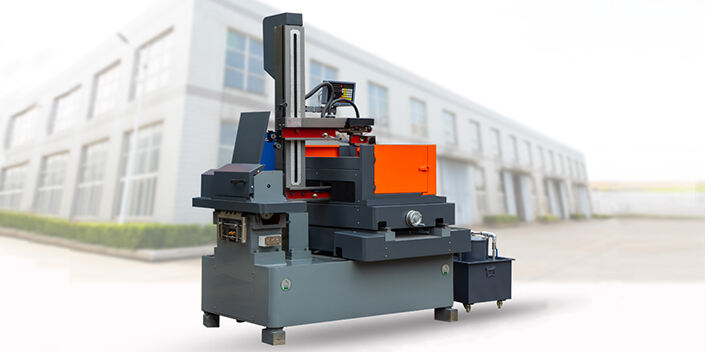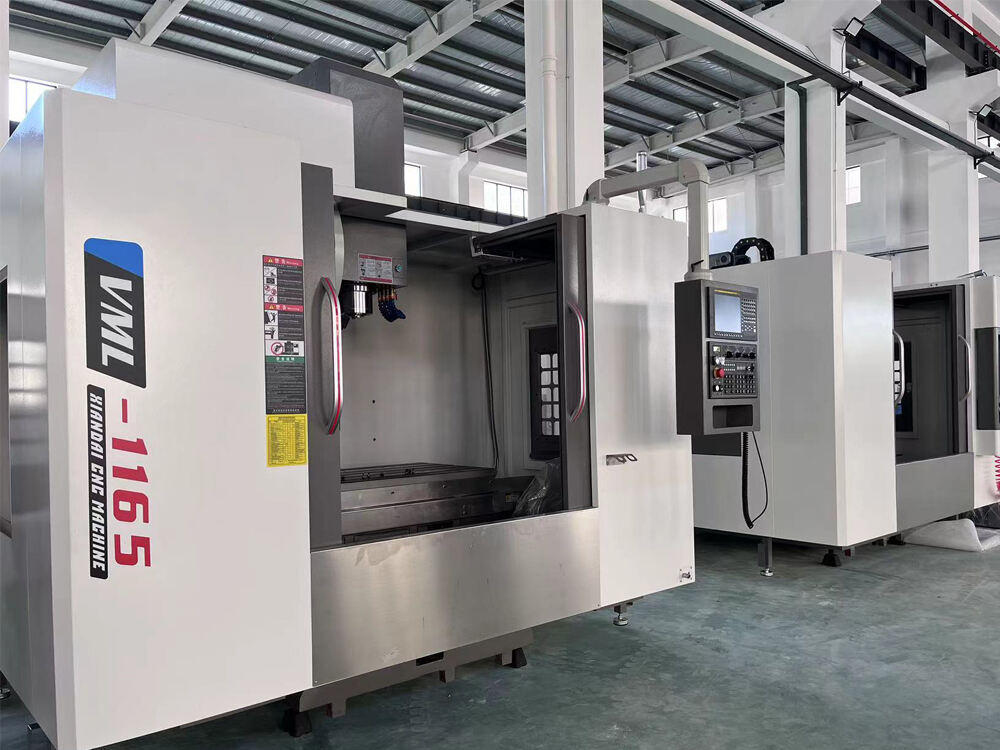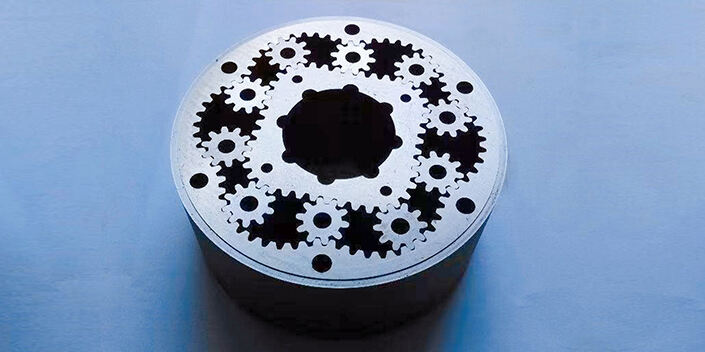How EDM Machine Technology Works: Principles of Spark Erosion
Electrical Discharge Machining (EDM) Basics and Principles
EDM, short for Electrical Discharge Machining, takes away material through controlled electrical sparks rather than relying on traditional mechanical cutting methods. This differs from standard machining techniques because EDM only works with materials that conduct electricity, which makes it particularly useful when dealing with tough metals such as titanium or carbide alloys that are difficult to machine otherwise. During the actual process, there's an electrode acting as the tool alongside the workpiece being processed, both sitting inside what's called dielectric fluid. This special liquid serves as insulation normally but breaks down once enough voltage builds up between the two components, creating those tiny sparks that do all the cutting work.
How EDM Works Using Electrical Sparks to Erode Metal
When voltage is applied between the electrode and workpiece, intense electric fields ionize the dielectric fluid, creating a conductive plasma channel. Sparks generate localized temperatures exceeding 12,000°C, vaporizing microscopic material particles. This cycle repeats thousands of times per second, progressively shaping the workpiece with micron-level accuracy.
The Phenomenon of Spark Erosion in Non-Contact Machining
EDM works without any actual touching between the tool and what's being cut, so there's basically no mechanical stress or wear on tools over time. The special fluid used here does two main things at once: controls those sparks that do the cutting while also washing away all the tiny bits that get knocked off during the process. When manufacturers get the flow of this fluid just right, they can actually see their surface finishes improve around 40% better when working with really tough materials like hardened steel. What makes EDM stand out is how it lets engineers create super complicated shapes that would be nearly impossible using conventional machining techniques. Think about those tiny cooling holes inside jet engine blades that need to be perfectly placed for maximum efficiency something traditional methods simply can't handle.
Types of EDM Machines: Wire, Sinker, and Hole Drilling EDM
Modern manufacturing relies on three primary EDM machine configurations: wire EDM, sinker EDM (also called ram EDM), and hole drilling EDM. Each type employs controlled electrical discharges to erode conductive materials, but their applications and mechanics differ significantly.
Types of EDM: Wire EDM, Sinker EDM, and Hole Drilling EDM
- Wire EDM uses a continuously fed brass strand (0.05–0.35mm diameter) to slice intricate 2D profiles in hardened metals.
- Sinker EDM submerges a shaped graphite/copper electrode and workpiece in dielectric fluid to forge complex 3D cavities.
- Hole Drilling EDM rotates tubular electrodes to create micron-accurate holes for cooling channels in aerospace turbine blades or medical implants.
Wire EDM Principles and Process Mechanics
Wire EDM thrives on precision. As detailed in the 2024 EDM process classification report, the wire never contacts the workpiece, eliminating mechanical stress. Sparks generated between the wire and material melt microscopic particles, while dielectric fluid flushes debris and stabilizes temperatures.
Capabilities of EDM for Cutting Complex 2D Shapes and Intricate Parts
This method excels in cutting titanium alloys or carbides into parts with ±0.005mm tolerances. Its non-contact approach avoids tool deflection, making it ideal for stamping dies, gears, and components requiring sharp edges or fragile geometries.
Hole Drilling EDM: Applications in Aerospace and Medical Components
Hole drilling EDM achieves 0.1–3mm diameter holes in hardened materials like Inconel. Aerospace firms use it for fuel nozzle channels, while medical device makers rely on it for surgical tool apertures—applications where laser or mechanical drilling risks thermal distortion or tool breakage.
Achieving Micron-Level Precision with EDM Machine
Wire EDM Tolerances and Accuracy: Achieving Micrometer-Level Precision
Today's wire EDM machines can hit incredibly tight tolerances around ±1 micron or about 0.001 mm for parts where precision matters most such as aerospace components and medical implants. The latest data from the Precision Machining Report released in 2024 shows that these cutting edge micro EDM systems employ nano level servo controls along with carefully managed spark energy levels. This allows them to create complex shapes without causing too much heat related warping. TTH Manufacturing Insights backs up these claims through their research, which demonstrates that even when working with tough materials like hardened tool steel and carbide, dimensional accuracy stays within roughly 0.002 mm throughout long machining operations. For manufacturers dealing with high tolerance requirements, this represents a major advancement in what is possible with electrical discharge machining technology.
Factors Affecting EDM Precision: Power Settings, Flushing, and Speed
Three key variables determine final accuracy:
- Pulse duration: Shorter discharges (as low as 3 ns) reduce heat diffusion for sharper edges
- Dielectric fluid pressure: Optimal flushing removes debris without deflecting thin workpieces
- Wire tension stability: Variations >0.5 N can introduce ±2 μm errors in deep cuts
Role of Machine Setup and Parameters in Maintaining High Precision
Consistent results require balancing speed and fidelity. For example, reducing wire feed rates from 12 m/min to 8 m/min improves surface finish to Ra 0.4 μm but increases cycle time by 35%. Automated parameter optimization systems now adjust spark frequency and off-time dynamically, achieving ±0.005 mm positional accuracy across 500-mm travel ranges.
EDM vs. Laser Cutting: Evaluating Fine Feature Resolution and Accuracy
Fiber lasers can definitely keep up with EDM when it comes to cutting speed, hitting around 200 mm/s compared to EDM's much slower range of 10 to 50 mm/s. But there's one area where they just don't measure up: getting consistent results at the micron level on reflective materials. The latest research from 2023 found that laser systems tended to drift about plus or minus 0.015 mm when working on those tricky titanium brackets used in aerospace components. Meanwhile, EDM stayed rock solid within a tighter window of plus or minus 0.003 mm. And let's not forget about those pesky recast layers that lasers create during thermal processing these can really mess up precision assemblies where tolerances are razor thin. That's another reason why many shops still rely on good old EDM for their most critical work.
Advantages of EDM Over Conventional Machining Methods
Benefits of non-contact machining in EDM
EDM tech works differently from regular milling because there's no direct contact between the tool and what's being worked on. According to some research from CIRP in 2022, this actually cuts down mechanical stress by around three quarters compared to traditional methods. The lack of physical touch makes it possible to machine really delicate shapes such as those thin walls or tiny cavities that would normally warp under normal vibrations. Take medical implants for instance. Companies making these products can now produce bone scaffolds with pores just 150 microns apart while keeping everything structurally sound throughout the manufacturing process. This has opened up new possibilities in creating implants that better mimic natural bone structures.
Eliminating tool wear and material distortion with EDM
Standard machining techniques tend to lose about 0.3 mm of tool material every hour during hardened steel operations. Compare that to EDM electrodes which only wear away around 0.02 mm per hour under similar conditions. That's roughly a 15 to 1 advantage in tool longevity, allowing manufacturers to maintain tight tolerances within plus or minus 2 microns throughout entire production runs. What makes this really important is the dielectric fluid surrounding the workpiece. This special environment stops parts from warping due to heat, something that matters a lot when working with aerospace grade aluminum alloys. Traditional approaches often cause dimensional shifts between 25 and 50 micrometers because of all the heat generated during cutting processes.
Comparing EDM and conventional machining: efficiency, precision, and material flexibility
| Attribute | EDM Machining | Conventional Machining |
|---|---|---|
| Hard Material Capacity | Machines 65+ HRC steels | Limited to ¥45 HRC steels |
| Minimum Feature Size | 20 μm details | 100 μm typical |
| Surface Finish (Ra) | 0.1–0.4 μm | 1.6–3.2 μm |
| Setup Complexity | 3–5 hours | 1–2 hours |
While conventional methods maintain speed advantages for simple geometries, EDM machines achieve 98% first-pass success rates on complex parts according to ISO 9013 standards. Material flexibility extends to tungsten carbides and nickel superalloys used in 78% of modern turbine components.
Materials, Dielectrics, and Industrial Applications of EDM Machine
Suitable Materials for EDM: Titanium, Carbide, and Other Hard Conductive Alloys
EDM works best when dealing with materials that give regular cutting tools a hard time. Take titanium alloys, tungsten carbide, and various hardened steels used extensively in aerospace components and medical implants. These tough materials make up around two thirds of all EDM work because the process uses electrical sparks to wear them down without applying physical pressure. The aerospace sector especially loves this approach for parts made from exotic alloys like Inconel, where EDM can produce incredibly smooth surfaces below 0.1 microns something standard machining just cant achieve reliably. This makes EDM indispensable for precision manufacturing where material properties would otherwise limit production options.
Dielectric Fluid Functions and Selection for Stable Spark Performance
Dielectric fluid serves two main purposes during electrical discharge machining processes. It acts as an insulator to prevent unwanted sparks from forming too early, and also works as a coolant that washes away the tiny metal particles created during cutting. Most shops stick with hydrocarbon oils when working on sinker EDM because these oils are really good at suppressing arcs. Wire EDM operations tend to go for deionized water instead since it cleans out debris much faster. Research published last year showed something interesting about how important viscosity actually is. According to findings from 2023, changes in fluid thickness can affect spark gap stability by as much as thirty percent. This means manufacturers need to carefully match dielectric viscosity levels if they want consistently accurate results from their precision machining work.
EDM in Aerospace, Medical, and Mold-Making Industries
- Aerospace: Wire EDM machines turbine blade cooling holes in nickel superalloys with ±2μm accuracy.
- Medical: Sinker EDM creates orthopedic implant textures that promote bone adhesion.
- Mold-making: Complex injection mold geometries are carved into hardened tool steels, reducing post-polishing by 50%.
Over 45% of EDM systems now service these industries, driven by demand for miniaturized, heat-resistant components.
Case Study: Wire EDM in Manufacturing Turbine Blades for Jet Engines
One turbine blade maker saw their rework rate drop by almost a quarter when they switched to adaptive wire EDM controls. They were able to get those airfoil edges super sharp, under 10 microns actually, even though they're working with Inconel 718 which is roughly 30 percent tougher than regular aerospace materials. The level of detail matters because it helps jet engines pass those FAA tests for how cracks spread over time. And honestly, there just isn't any other technology out there that can handle these kinds of precision requirements for parts where failure isn't an option.
FAQ
What is EDM machining?
EDM machining involves removing material via controlled electrical sparks, allowing machining of electrically conductive materials like titanium and carbide alloys.
What are the main types of EDM machines?
The main types are wire EDM, sinker EDM, and hole drilling EDM, each with unique applications and methods for material erosion.
How does EDM achieve high precision?
EDM achieves high precision through non-contact processing, controlled spark energy, and optimal dielectric fluid use, hitting tolerances as tight as ±1 micron.
What materials are suitable for EDM?
Materials like titanium, carbide, and hardened metals are ideal for EDM due to their electrical conductivity, making them easier to machine without physical contact.
Why choose EDM over traditional machining?
EDM offers benefits like lower tool wear, reduced material distortion, and the ability to machine complex or delicate parts with high precision.





